26th August, 2025
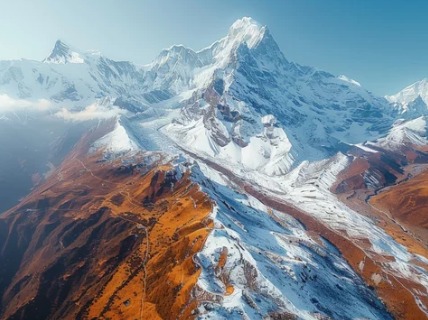
Sep 30, 2023
Annapurna Base Camp Trek In December
- ABC Trek In December Highlights:
- Is it a Good Time to Trek to Annapurna Base Camp in December?
- Annapurna Base Camp Trek December: Weather, Climate, and Temperature
- Can I Do the Annapurna Base Camp Trek in December?
- How Safe is Trekking to ABC in December?
- Can We Do Annapurna Base Camp Trek Without Guide?
- Can I Trek to ABC Solo?
- How Can I Get to Annapurna Base Camp?
- Can I Do It In 7 Days?
- What Should I Pack for December Trek to ABC?
- What Kind of Permit is Required for ABC?
- Conclusion
- Annapurna Base Camp Trekking packages
Trekking to Annapurna Base Camp in December offers a unique and rewarding experience amidst Nepal's Himalayan landscapes, albeit with certain considerations due to the winter season.
December marks the beginning of winter in Nepal, and trekking conditions in the Annapurna region reflect this change. Days are typically sunny and clear, with crisp temperatures ranging from 5°C to 12°C (41°F to 54°F) at lower elevations. However, nights and higher altitudes can be quite cold, dropping well below freezing, requiring trekkers to be well-prepared with warm clothing and sleeping gear.

ANNAPURNA BASE CAMP TREK 9 DAYS
The Annapurna Base Camp (ABC) (4130m) is also known as the "Annapurna Sanctuary Trek". This trek promises “in-your-face” unprecedented views of colossal Himalaya ranges, which include Hiunchuli, Macha...
One of the significant advantages of trekking in December is the tranquility and solitude along the trail. Compared to the peak months of October and November, December sees fewer trekkers, allowing for a more peaceful and intimate experience amidst the stunning Himalayan vistas. The trails, though colder and potentially snowy at higher elevations, offer pristine views of snow-capped peaks and crystal-clear skies during the day.
However, trekkers should be prepared for colder temperatures and the possibility of snowfall, especially as you ascend towards Annapurna Base Camp at 4,130 meters (13,549 feet). Proper gear such as insulated jackets, thermal layers, gloves, hats, and sturdy waterproof boots are essential. It's also crucial to acclimatize properly, stay hydrated, and be vigilant for signs of altitude sickness.
Despite the colder conditions, December trekking rewards adventurers with quieter trails, stunning winter landscapes, and a sense of accomplishment in reaching the base camp amidst Nepal's iconic Himalayan peaks. It's a season that appeals to those seeking a more serene and challenging trekking experience in one of the world's most breathtaking mountain ranges.

GHOREPANI POON HILL TREKKING
PHOTOGRAPHERS DREAM - INCREDIBLE VIEWS!A LESS BACK-BREAKING TREK WITH JAW-DROPPING VIEWS & CULTURALLY RICH GURUNG & MAGAR VILLAGE LIFE. A REAL NO-BRAINER! ONE OF THE MOST POPULAR TREKS IN NEPA...
ABC Trek In December Highlights:
Trekking to Annapurna Base Camp (ABC) in December presents a unique adventure amidst Nepal's winter wonderland. Despite the colder temperatures and potential for snowfall, December offers distinct highlights that appeal to trekkers seeking a quieter, more serene Himalayan experience.
The trail to ABC in December is less crowded compared to peak seasons, allowing trekkers to enjoy the pristine beauty of snow-covered landscapes and panoramic views of the Annapurna mountain range. The crisp, clear skies during the day provide stunning photographic opportunities, especially during sunrise and sunset against the backdrop of towering peaks like Annapurna I and Machapuchare.
Moreover, trekking in December offers a chance to witness local villages adorned with festive decorations and experience the warmth of Nepali hospitality amidst the winter season. Teahouses along the route provide cozy retreats where trekkers can enjoy hearty meals and hot beverages, essential for staying warm and energized during the trek.
Is it a Good Time to Trek to Annapurna Base Camp in December?
December can indeed be a good time to trek to Annapurna Base Camp, offering a unique and quieter experience compared to peak trekking seasons. While it is winter in Nepal, and temperatures can be cold, trekking conditions are generally manageable for those well-prepared for the colder climate.
One of the main advantages of trekking in December is the reduced number of trekkers on the trail. This means quieter trails, more peaceful surroundings, and a chance to enjoy the natural beauty of the Annapurna region without the crowds. Accommodation at teahouses along the route is more readily available, and trekkers can often enjoy more personalized service.
Weather-wise, December typically sees clear skies during the day with cold temperatures, especially at higher altitudes. While there is a possibility of snowfall, the trails are usually navigable with proper gear and precautions. The snowy landscapes add a picturesque charm to the trek, enhancing the overall experience for photographers and nature enthusiasts.
Overall, for those seeking a quieter trekking experience amidst stunning winter scenery and willing to prepare adequately for colder temperatures, December can be an excellent time to trek to Annapurna Base Camp.
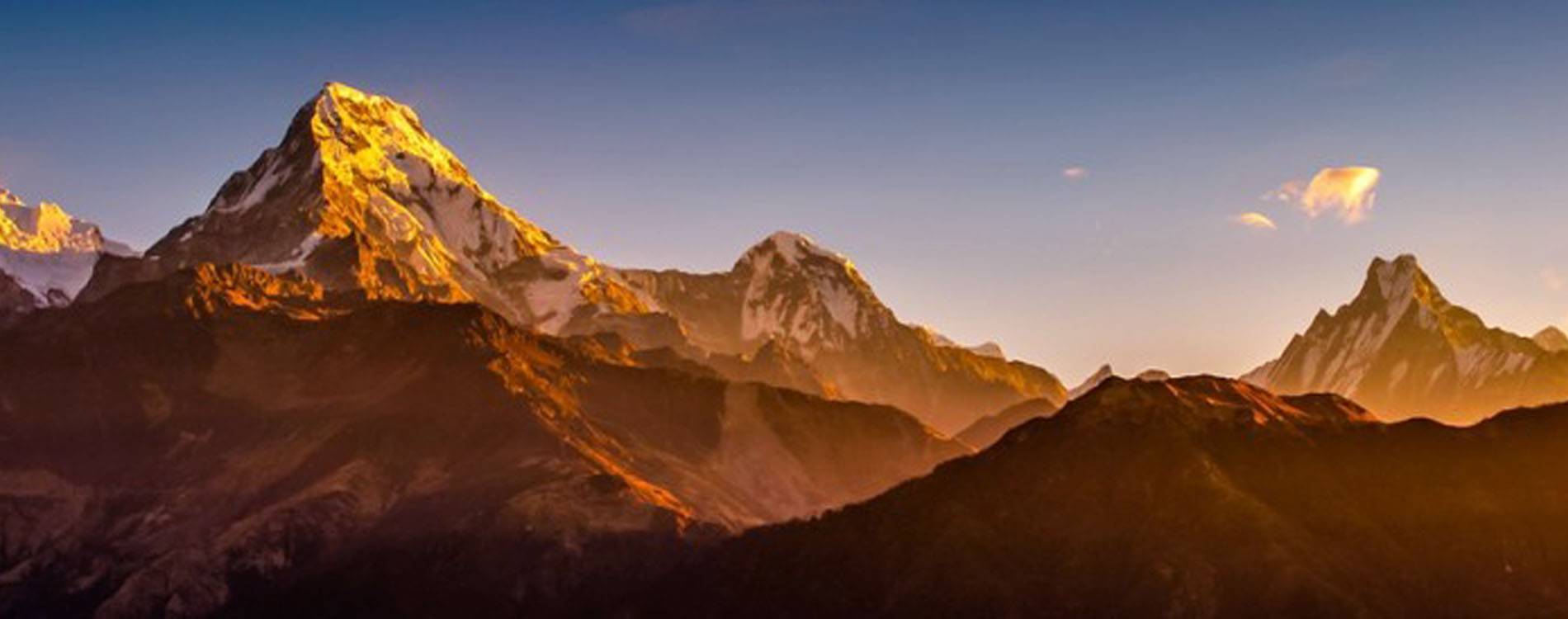
12 DAYS ANNAPURNA BASE CAMP TREK
DOUBLE THE ADVENTURE IN JUST 12 DAYS! The 12 Day Annapurna Base Camp Trek combines two well-known and popular treks into one - the Ghorepani Poon Hill Trek and the Annapurna Base Camp Trek (ABC)....
Annapurna Base Camp Trek December: Weather, Climate, and Temperature
Trekking to Annapurna Base Camp in December brings trekkers face-to-face with the winter climate of the Himalayas. December marks the beginning of the winter season in Nepal, characterized by cold temperatures and occasional snowfall, especially at higher altitudes.
During December, temperatures along the trekking route to Annapurna Base Camp vary significantly depending on the altitude. At lower elevations (around 1,000 to 2,000 meters), daytime temperatures range from 5°C to 15°C (41°F to 59°F). As trekkers ascend higher towards Annapurna Base Camp at 4,130 meters (13,549 feet), temperatures drop significantly, often dipping below freezing point, especially at night.
The weather in December is generally dry and stable, with clear skies providing excellent visibility of the surrounding Himalayan peaks during the day. However, trekkers should be prepared for colder conditions, especially during early mornings and evenings, when temperatures are the lowest.
Snowfall is possible, particularly at higher elevations, which can affect trail conditions and visibility. Proper gear such as insulated clothing, waterproof boots, gloves, and a warm sleeping bag are essential to stay comfortable and safe in the cold climate.
Despite the cold, December offers the opportunity to experience the serene beauty of snow-covered landscapes, enjoy quieter trails, and witness local villages adorned with winter festivities. With adequate preparation and a spirit of adventure, December can be a rewarding time to embark on the Annapurna Base Camp trek.
Can I Do the Annapurna Base Camp Trek in December?
Yes, trekking to Annapurna Base Camp in December is feasible for adventurous trekkers who are prepared for colder temperatures and potential snowfall. While December is winter in Nepal, with cold conditions especially at higher altitudes, the trek offers unique rewards and challenges.
One of the main considerations for trekking in December is the weather. Days are generally clear with crisp, sunny skies, but temperatures can drop significantly, particularly at night and as you ascend higher along the trail. Trekkers must pack adequate cold-weather gear, including insulated clothing, waterproof layers, gloves, hats, and a warm sleeping bag rated for sub-zero temperatures.
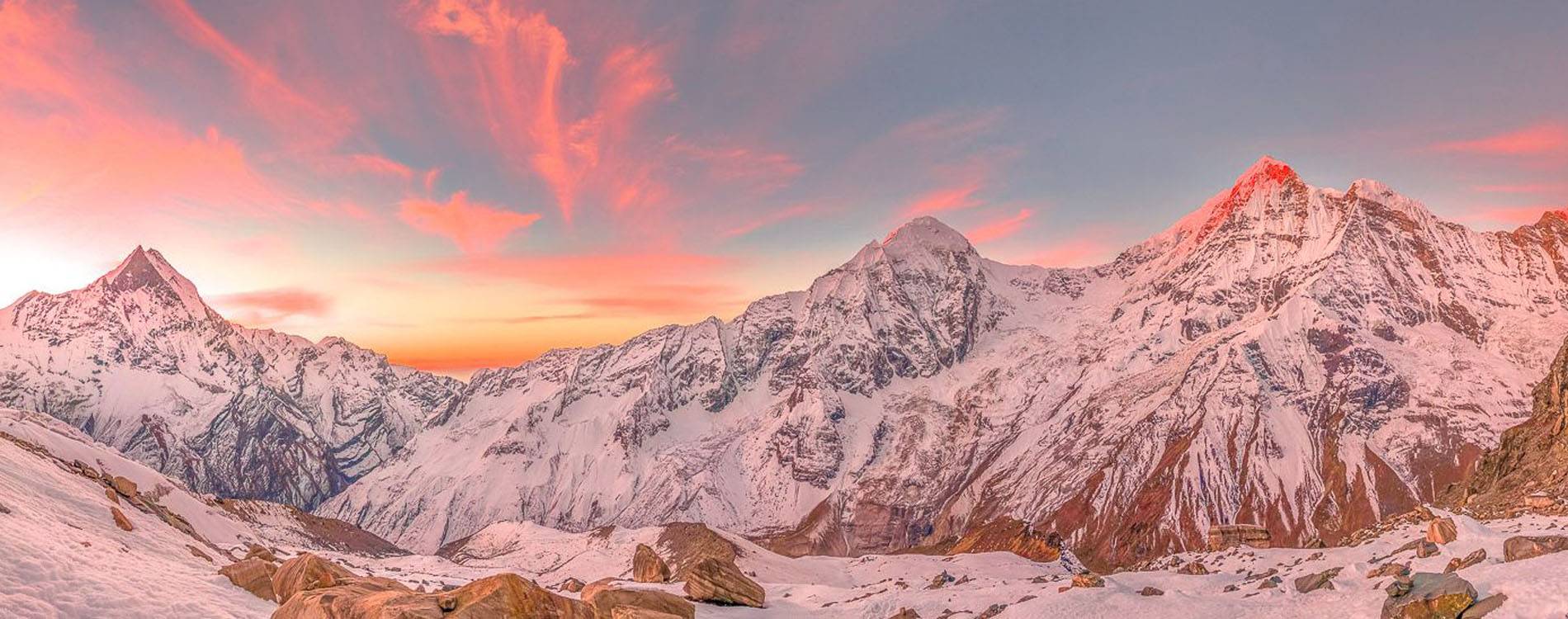
7 DAYS ANNAPURNA BASE CAMP TREK
Short on time – big on beauty!The 7 days Annapurna Base Camp Trek takes you to all the major attractions – but in less time than other treks to the Annapurna region. Take in the spectacular soaring sn...
Snowfall is a possibility, which can enhance the scenic beauty of the trek but also requires careful navigation and awareness of trail conditions. Proper footwear with good traction is essential for trekking on potentially icy or snowy paths.
Furthermore, December offers the advantage of fewer crowds on the trail compared to peak trekking seasons, allowing for a more peaceful and intimate experience amidst Nepal's majestic Himalayan landscapes. Teahouses along the route remain open and provide essential services such as meals, lodging, and warmth for trekkers.
Overall, with adequate preparation, physical fitness, and a willingness to embrace the winter climate, trekkers can successfully undertake the Annapurna Base Camp trek in December, enjoying the tranquility and natural beauty of the Himalayas during the quieter off-peak season.
How Safe is Trekking to ABC in December?
Trekking to Annapurna Base Camp (ABC) in December requires careful preparation and awareness of the winter conditions prevalent in the Himalayas during this time of year. While the trek is generally safe, several factors should be considered to ensure a secure and enjoyable experience:
- Weather Conditions: December in Nepal brings cold temperatures, especially at higher altitudes where temperatures can drop below freezing. Trekkers must be equipped with adequate cold-weather gear, including insulated clothing, waterproof layers, gloves, and a warm sleeping bag rated for sub-zero temperatures.
- Altitude and Acclimatization: The Annapurna Base Camp trek reaches heights of 4,130 meters (13,549 feet), which requires proper acclimatization to prevent altitude sickness. It's essential to ascend gradually, schedule acclimatization days, stay hydrated, and be aware of symptoms such as headache, nausea, and fatigue.
- Trail Conditions: December may see occasional snowfall, which can affect trail visibility and stability. Trekkers should be prepared for potentially slippery and icy paths, especially in shaded areas or early mornings.
- Physical Fitness: Trekking in winter conditions requires good physical fitness and stamina. Trekkers should undertake regular cardiovascular exercises and strength training to prepare for the challenging terrain and altitude gains.
- Guide and Local Knowledge: Hiring an experienced guide familiar with the trail and weather conditions can enhance safety by providing navigation assistance, local insights, and emergency support if needed.
- Emergency Preparedness: Carry a fully stocked first aid kit, medications for altitude sickness, and have a plan for emergency evacuation if necessary. Ensure your travel insurance covers trekking activities at high altitudes.
By addressing these safety considerations and preparing adequately for winter trekking conditions, trekkers can enjoy the breathtaking landscapes and cultural experiences of the Annapurna Base Camp trek in December safely and responsibly.
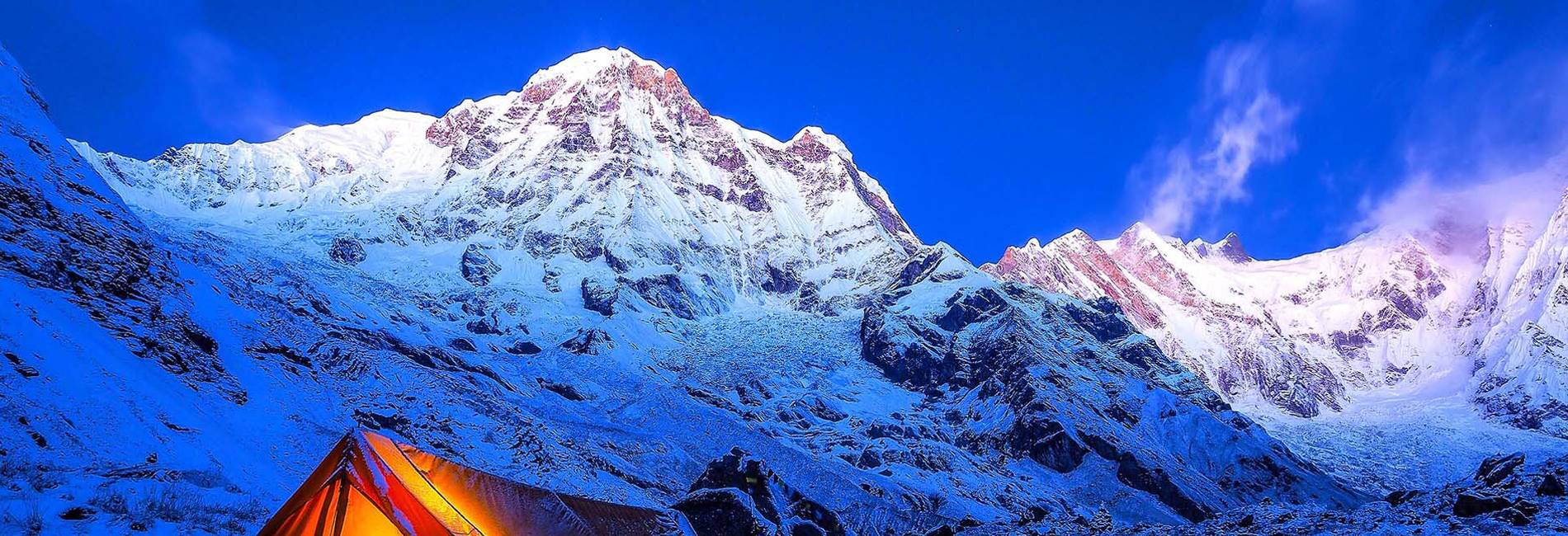
13 DAYS ANNAPURNA BASE CAMP TREK
Discover why “The Annapurna Base Camp (ABC) trek is world-famous. Here is a sample of soaring snow-capped peaks you will see along the trail: Mt. Dhaulagiri (8167m), Mt. Annapurna I (8091m) Mt. M...
Can We Do Annapurna Base Camp Trek Without Guide?
It is possible to trek to Annapurna Base Camp without a guide, as the trail is well-marked and frequented by trekkers. However, it is recommended to have prior trekking experience and be well-prepared for the challenges of trekking independently. Solo trekkers should ensure they have a detailed map, GPS device, and knowledge of the route, as well as necessary permits and emergency contacts. Teahouses along the trail provide accommodation and meals, making it feasible to trek independently while enjoying the flexibility of setting your own pace and itinerary.
Can I Trek to ABC Solo?
Trekking solo to Annapurna Base Camp is possible for experienced trekkers who are confident in their abilities to navigate the trail and manage the challenges of high-altitude trekking. Solo trekkers should be physically fit, have prior trekking experience in similar terrain, and be prepared for the cold weather conditions in December. It's essential to inform someone about your itinerary, carry necessary permits, have emergency contacts, and stay informed about weather forecasts and trail conditions. While solo trekking offers independence and solitude, it's advisable to consider hiring a guide or joining a trekking group for added safety and companionship, especially in challenging weather or trail conditions.
How Can I Get to Annapurna Base Camp?
The trek to Annapurna Base Camp typically starts from Nayapul or Phedi, accessible from Pokhara by road. From Pokhara, a scenic 1.5 to 2-hour drive takes you to the trek's starting point. Alternatively, trekkers can take a short flight from Kathmandu to Pokhara and then proceed by road to the trailhead. The trek itself follows a well-established route through picturesque villages, dense forests, and alpine meadows, eventually reaching the spectacular amphitheater of Annapurna Base Camp. Teahouses and lodges along the trail provide accommodation and meals, making it accessible for trekkers of varying experience levels and preferences.
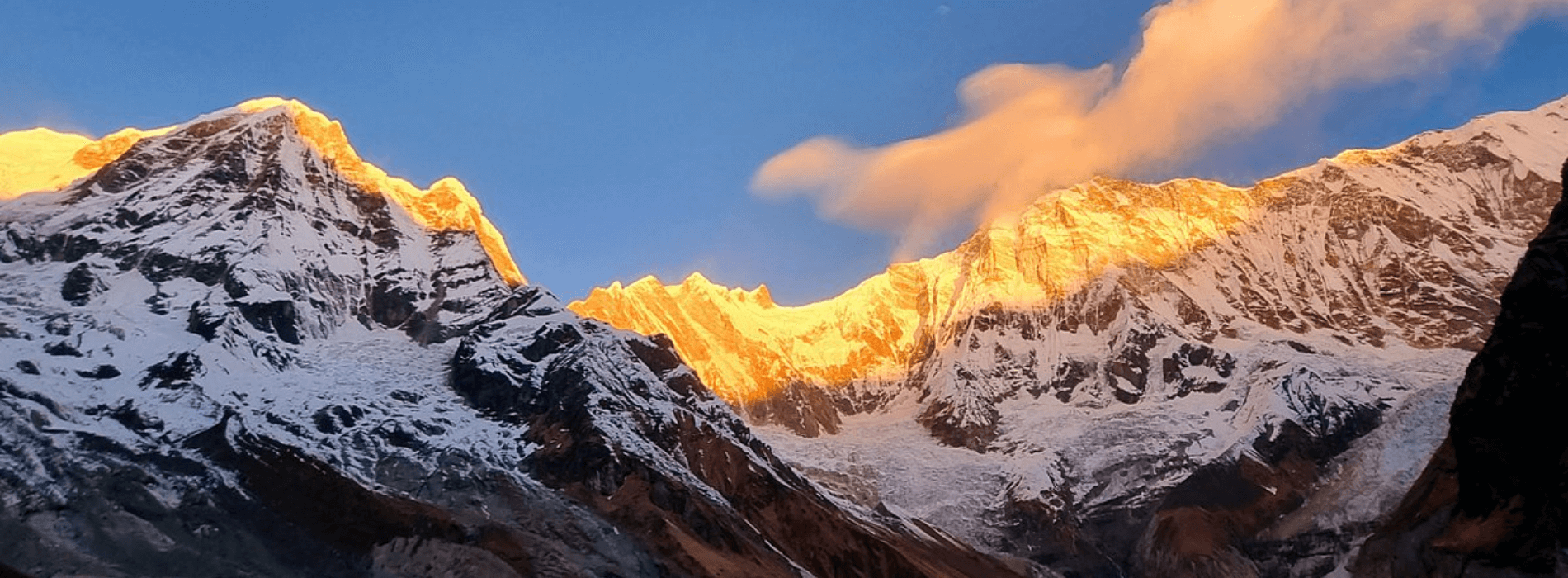
ANNAPURNA BASE CAMP TREK 10 DAYS
This 10 days Annapurna Base Camp (ABC) trek brings you into the heart of Nepal's Himalayas from the very being of the hike. With so many snow-capped peaks on the show, it is no surprise this one-week-...
Can I Do It In 7 Days?
While it's possible to complete the Annapurna Base Camp trek in 7 days, it is a challenging itinerary that requires good physical fitness and acclimatization. The standard trekking duration is usually 10 to 12 days, allowing for gradual ascent and acclimatization to the high altitude. A 7-day itinerary typically involves trekking long hours each day, which may not be suitable for everyone, especially considering the altitude gains and potential for altitude sickness. Trekkers opting for a 7-day trek should be prepared for strenuous hiking, early starts, and limited acclimatization time, which increases the risk of altitude-related issues. It's essential to listen to your body, stay hydrated, and be aware of symptoms of altitude sickness. Consideration should also be given to weather conditions and the availability of transportation to and from the trek's starting point, which may impact the feasibility of a shorter itinerary.
What Should I Pack for December Trek to ABC?
Packing for a December trek to Annapurna Base Camp requires careful consideration of the cold weather conditions and varying altitudes along the trail. Essential items include:
- Clothing: Thermal base layers, insulated jacket, waterproof and windproof outer layers, fleece or down jacket, gloves, hat, and warm socks.
- Footwear: Sturdy waterproof hiking boots with good traction, gaiters (for snow and mud), and comfortable trekking socks.
- Gear: Sleeping bag suitable for sub-zero temperatures, trekking poles, headlamp or flashlight with extra batteries, and a daypack.
- Personal Items: Sunscreen, lip balm, sunglasses, toiletries, and personal medication kit.
- Miscellaneous: Water purification tablets or filter, snacks, camera with extra batteries, and a portable charger.
Pack light but ensure you have essential items for warmth, comfort, and safety throughout the trek. Layers are crucial for adjusting to changing temperatures and weather conditions along the trail.
What Kind of Permit is Required for ABC?
To trek to Annapurna Base Camp, trekkers need two permits:
- Annapurna Conservation Area Permit (ACAP): This permit is mandatory for all trekkers entering the Annapurna Conservation Area. It helps fund conservation efforts and costs approximately USD 30.
- TIMS Card (Trekkers' Information Management System): The TIMS card is required to ensure the safety and security of trekkers in the region. It costs around USD 20 for individual trekkers.
Permits can be obtained from the Nepal Tourism Board office in Kathmandu or Pokhara. It's advisable to carry these permits throughout the trek and present them at checkpoints when required.

ANNAPURNA BASE CAMP TREK 9 DAYS
The Annapurna Base Camp (ABC) (4130m) is also known as the "Annapurna Sanctuary Trek". This trek promises “in-your-face” unprecedented views of colossal Himalaya ranges, which include Hiunchuli, Macha...
Conclusion
Trekking to Annapurna Base Camp in December offers a challenging yet rewarding adventure amidst Nepal's stunning Himalayan landscapes. With proper preparation, including cold-weather gear, necessary permits, and awareness of trekking conditions, trekkers can enjoy the tranquility of snow-covered trails, breathtaking mountain views, and cultural encounters with local communities. Whether trekking solo or with a guide, December provides an opportunity to experience the natural beauty and hospitality of the Annapurna region in a quieter season. Embrace the adventure, stay safe, and cherish the memories of this unforgettable trekking journey in the heart of the Himalayas.
Annapurna Base Camp Trekking packages
14 Days Annapurna Base Camp Trek
13 Days Annapurna Base Camp Trek
12 Days Annapurna Base Camp Trek
9 Days Annapurna Base Camp Trek
7 Days Annapurna Base Camp Trek
6 Days Annapurna Base Camp Trek
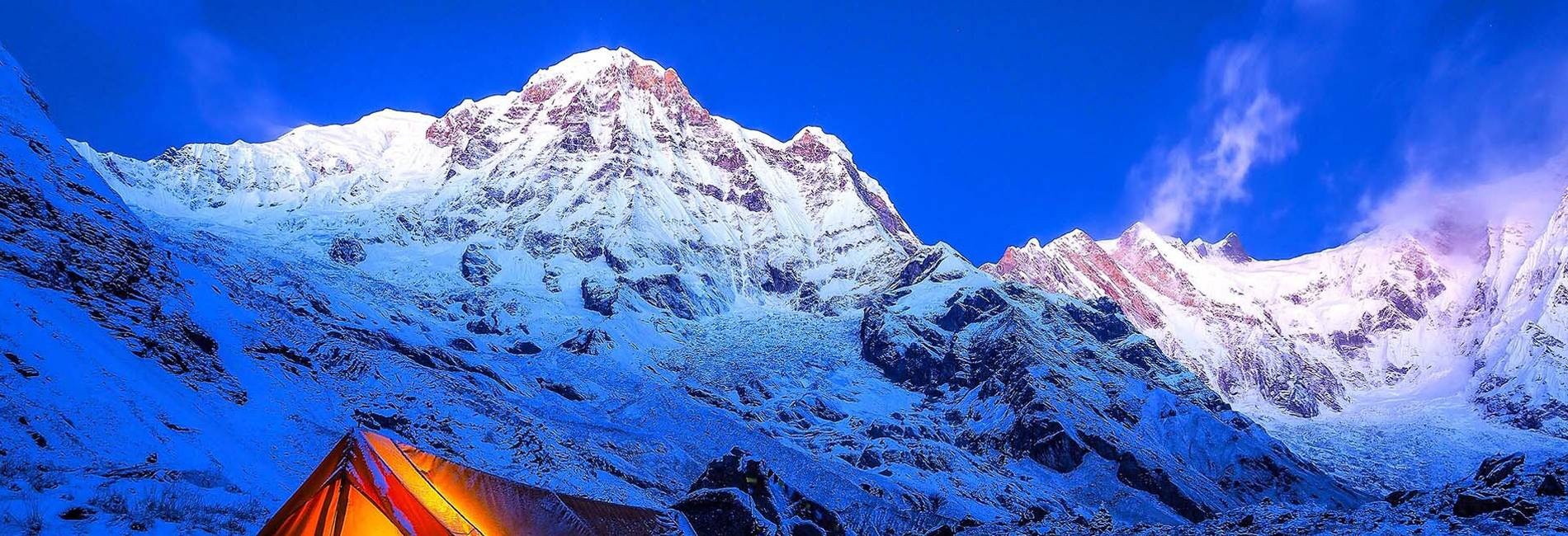
ANNAPURNA BASE CAMP TREK 8 DAYS
The 8 days Annapurna Base Camp Trek is the most popular and amazing trek in the Annapurna region which offers combines remarkable Himalaya vistas, traditional Gurung and Magar village life, and dense...
Any Questions? Let Us Know.
Recent Posts
17th June, 2025


















